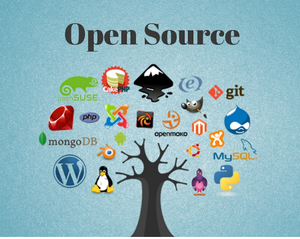"Building Your Own Open Source Project: A Guide"
Body
Introduction:
Building your own open source project can be an incredibly rewarding experience. Not only do you get to contribute to the open source community, but you also get to learn new skills, collaborate with other developers, and build something that can be used by people all over the world. However, starting an open source project can also be a daunting task, especially if you're new to open source or haven't built a software project before. This guide will walk you through the process of building your own open source project, from start to finish.
Finding a Problem to Solve
The first step in building your own open source project is to find a problem that you want to solve. It's important to choose a problem that you're passionate about and that you believe is important. Look for problems that you've encountered in your own work or that you've seen others struggling with. You can also look for problems in the open source community that haven't been addressed yet.
Once you've identified a problem, research it to make sure that it's something that can be solved with software. You'll also want to make sure that there isn't already an existing open source project that addresses the problem. If there is, consider contributing to that project instead of starting your own.
Planning and Designing Your Project
Once you've identified a problem to solve, the next step is to plan and design your project. This is an important step because it will help you to understand the scope of the project and to identify any potential challenges. Start by creating a rough outline of your project, including the features that you want to include and the technologies that you'll be using.
Next, create a detailed design document that includes a description of the problem, the features that you want to include, and a high-level overview of the architecture. This document should also include a list of the technologies that you'll be using, as well as any third-party libraries or frameworks that you'll be relying on.
Building and Testing Your Project
With your project planned and designed, it's time to start building your project. The building process will depend on the technologies that you've chosen, but it will typically involve writing code, testing, and debugging. It's important to make sure that your code is well-organized and easy to understand, and that you're following best practices for software development.
As you build your project, you should also be testing it to make sure that it works as expected. This will help you to identify any bugs or issues that need to be fixed. You should also create documentation for your project, including installation instructions, a user guide, and a FAQ.
Release and Maintenance
Once your project is built and tested, it's time to release it to the world. You'll need to choose a license for your project, which will determine how other people are allowed to use your code. The most common open-source licenses are the MIT, Apache, and GPL.
After releasing your project, it's important to continue to maintain it. This will include fixing bugs, adding new features, and responding to feedback from users. You'll also want to make sure that your project is compatible with the latest versions of the technologies that you're using.
Conclusion:
Building your own open source project can be a rewarding experience. By solving a problem you care about, planning and designing your project, building and testing your code, and releasing and maintaining it, you'll be contributing to the open source community and building something that can be used by people all over the world.











Comments